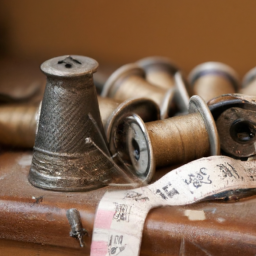
History of Sewing Needles

Ancient Origins
Sewing has been an essential skill for humans throughout history, and the needles used for sewing have evolved over time. The earliest evidence of sewing needles dates back to around 25,000 years ago during the Upper Paleolithic period. These early needles were made from bones or ivory and were used primarily for leather and fur sewing.
Transition to Metal Needles
As civilizations progressed, so did the development of sewing needles. Around 3000 BC, a significant advancement occurred with the invention of metal needles. These early metal needles were crafted from copper, bronze, or iron. The process of creating metal needles allowed for more precise and efficient stitching, enabling the creation of intricate garments and textiles.
Industrial Revolution and Modern Needles
The Industrial Revolution marked a turning point in the history of sewing needles. The invention of the sewing machine in the mid-19th century revolutionized the textile industry and paved the way for mass production of clothing. With the rise of mechanized sewing, the demand for specialized needles emerged. These modern needles were designed specifically for sewing machines to ensure smooth and efficient stitching.
Needle Manufacturing Today
Today, sewing needles are mass-produced using advanced manufacturing techniques. They are typically made from stainless steel, which provides strength, durability, and resistance to corrosion. Needles come in various sizes and types, each designed for a specific sewing task, such as quilting, embroidery, or stitching heavy fabrics.
Conclusion
From humble beginnings as bone and ivory tools to the sophisticated stainless-steel needles of today, sewing needles have played a crucial role in the development of a wide range of textile crafts. The history of sewing needles reflects the continuous innovation and adaptation of tools to meet the evolving needs of society, allowing for the exquisite art of sewing to flourish.




